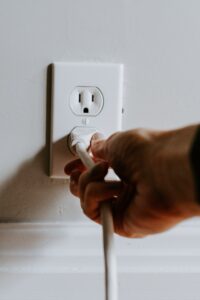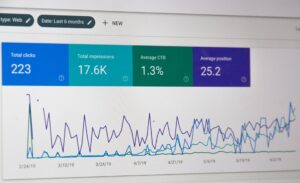by Kevin Lewis | Jun 22, 2025 | Business
Domestic abuse fractures lives behind closed doors and across every social boundary. Survivors often feel isolated, uncertain, and overwhelmed by a legal system that can appear distant. Yet a dedicated domestic violence attorney can shift the balance. By translating law into practical protection, these lawyers give survivors the legal tools and confidence needed to rebuild stability, dignity, and peace.
Legal Guidance That Places Survivor Safety First
Fear of retaliation is one of the main reasons many victims hesitate to seek help. An attorney who focuses on domestic violence understands those fears and addresses them in concrete ways. The lawyer begins by listening without judgment, gathering facts, and mapping the safest immediate steps. That first consultation often includes an explanation of emergency protective orders—court directives that bar an abuser from contact, remove firearms, and sometimes grant exclusive residence rights.
By filing for a protective order quickly and correctly, the attorney minimizes procedural delays that could leave a client exposed. Speed matters: in many jurisdictions, hearings for a temporary order occur within days. A meticulous petition supported by clear evidence raises the likelihood of favorable terms. The attorney also prepares the survivor for the hearing, outlining typical courtroom questions so that testimony remains focused on incidents that meet the legal definition of abuse.
Once a temporary order is in place, the lawyer tracks service of process to confirm that law-enforcement officers have formally notified the respondent. This point is critical; without proper service, the order lacks enforceability. By monitoring every step, counsel removes administrative confusion, allowing the survivor to concentrate on healing.
Beyond Court Papers: A Comprehensive Advocacy Role
Domestic violence lawyers do much more than draft pleadings. Many clients also need help with divorce, child custody, visitation, or spousal support. When abuse forms part of family-law litigation, safety considerations influence nearly every aspect of strategy. An attorney will request supervised exchanges or visitation restrictions if the abuser poses a danger to children. The lawyer may pursue exclusive use of the family vehicle or home to prevent further intimidation.
Immigrant survivors confront extra barriers, including threats of deportation used as a control tactic. Attorneys familiar with the Violence Against Women Act self-petition provisions or U Visa applications can secure lawful status independent of the abuser, removing a powerful leverage point. That new legal footing opens doors to employment, education, and medical care—fundamental pieces of long-term independence.
Financial abuse often accompanies physical or emotional harm. Control over bank accounts, paychecks, and credit keeps victims trapped. Attorneys can petition courts to freeze shared assets or obtain emergency support payments, preventing a survivor from having to choose between personal safety and economic survival.
Working Hand in Hand with Community Partners
Effective legal representation rarely occurs in a vacuum; it thrives through collaboration. A domestic violence attorney typically maintains strong ties to shelter networks, therapists, and law-enforcement liaison officers. After securing court protection, the lawyer may coordinate with an advocate at a local shelter to arrange safe housing or counseling.
Communication among professionals closes dangerous gaps. For example, if an abuser violates a protection order, the attorney’s prompt notice to police and prosecutors leads to swift enforcement. Similarly, when a counselor documents the survivor’s trauma symptoms, that record can strengthen the attorney’s argument for custody restrictions. By uniting legal and social services, attorneys help craft a multi-layered safety net.
Expanding Access to Justice
Legal fees present a concern for many victims. Fortunately, numerous domestic violence attorneys participate in pro bono programs or operate on a sliding-fee scale. Bar associations sponsor free legal clinics where survivors receive advice on preparing initial filings or understanding courtroom procedures. Some firms partner with nonprofits to handle complex litigation at no cost. State legislatures also fund civil legal assistance grants specifically for abuse cases, and attorneys knowledgeable about those funds can steer clients to the right offices.
Technology improves reach as well. Virtual consultations allow survivors in rural areas to connect with experienced counsel without long travel. Secure document-sharing platforms let clients upload evidence—text messages, photographs, medical reports—directly to the attorney’s encrypted portal. That convenience reduces missed workdays and limits the risk of being followed.
Looking Ahead: Innovation and Ongoing Reform
Family courts continue to adopt trauma-informed practices, a trend that domestic violence attorneys champion. Many jurisdictions now permit remote testimony when appearing in person could endanger a survivor. Some courts assign specially trained judges to abuse dockets, reducing inconsistencies in rulings. Attorneys who stay current on such reforms can leverage them to create smoother legal experiences for clients.
Artificial-intelligence tools are also helping lawyers sift through large volumes of digital evidence—social-media posts, emails, audio recordings—more efficiently. Faster document review translates into stronger, clearer cases presented to the judge. At the same time, attorneys remain vigilant about privacy, ensuring that sensitive data stays protected.
A Closing Perspective on Resilience and Legal Strength
Domestic abuse thrives in silence, and silence breaks when the law speaks clearly. A domestic violence attorney supplies that powerful voice. From the first protective order through final custody agreements, the lawyer’s commitment shields survivors, holds offenders accountable, and fosters healthier communities.
Every petition filed, every statute cited, and every courtroom argument delivered reflects a broader principle: safety is a fundamental right, not a privilege. By standing beside clients in their most vulnerable moments, domestic violence attorneys do more than practice law—they restore faith that justice can be personal, immediate, and life-affirming.
by Kevin Lewis | Jun 13, 2025 | sticky, Travel
Seoul stands at the forefront of blending cutting-edge technology with its vibrant cultural landscape. This synergy is vividly reflected in its nightlife scene, where innovative venues, digital entertainment, and cultural practices converge to create experiences like no other. For visitors eager to see Seoul’s modern creativity in full display, understanding this intersection offers unparalleled insights into the city’s dynamic spirit.
The Rise of Digital and Interactive Night Venues
Seoul’s nightlife landscape has embraced technological advances to enhance entertainment and customer engagement.
Smart Clubs and Themed Experiences
Many clubs in Seoul utilize digital lighting, interactive visuals, and synchronized sound systems controlled via tablet or AI-driven programs. For example, some venues incorporate immersive projection mapping that transforms the dance floor into a virtual landscape, providing a sensory feast.
Augmented Reality (AR) and Virtual Reality (VR) Spaces
Innovative entertainment spaces feature AR and VR experiences, where visitors don headsets to explore virtual worlds or participate in digital art installations. These venues often host special nights centered on tech art, gaming, and experiential storytelling.
Digital Art Exhibitions and Light Installations
Art-focused venues like Dongdaemun Design Plaza (DDP) and co-working spaces host night exhibitions blending traditional art with digital media, showcasing Korea’s technological prowess and cultural innovation.
Technology-Integrated Cultural Experiences
Traditional Meets Digital Music and Dance
Traditional Korean performances have moved into the digital age with augmented reality enhancements or interactive soundscapes, elevating classical dance and music into immersive spectacles. Some performances incorporate motion sensors or participatory elements, allowing audiences to influence the show.
Cultural Holograms and Virtual Guides
Holographic displays of historical figures or cultural icons have become popular attractions, enabling visitors to interact with ‘virtual’ characters and learn about Korea’s heritage in novel ways.
The Role of K-Pop and Digital Media
K-Pop’s global influence extends into nightlife, with many venues streaming live concerts, hosting fan meetups, or offering augmented experiences tied to popular idols. Digital media campaigns, interactive photo booths, and live social media updates make Seoul’s nightlife highly connected and shareable.
Practical Tips for Exploring Seoul’s Tech-Enhanced Nightlife
-
Stay connected: Ensure your phone plan or Wi-Fi device supports high-speed internet for seamless access to maps, social media, and event apps.
-
Use tech apps: Download apps like Kakao Map, Naver Map, and local guides to locate venues and get real-time updates.
-
Reserve tickets beforehand: Many high-tech venues and events require online bookings.
-
Prepare for interactive experiences: Bring a compatible smartphone or headphones if suggested by the venue for AR or VR activities.
-
Respect local customs: Some tech-driven performances incorporate cultural elements, so cultural sensitivity remains important.
Relaxing After a Tech-Driven Night
After exploring Seoul’s digital and cultural innovations, slowing down with a peaceful drink can be a perfect way to end the night. Venues like 강남매직미러 provide serene environments where you can unwind, enjoy a good beverage, and reflect on Seoul’s progressive spirit.
Final Thoughts
Seoul’s integration of technology with its diverse cultural scene makes the city a pioneer in nightlife innovation. From immersive clubs and digital art exhibitions to holographic performances and interactive entertainment, Seoul demonstrates how tradition and innovation can coexist harmoniously. Embracing these experiences not only enhances your visit but also deepens your appreciation of the city’s creative energy—a true reflection of Korea’s futuristic outlook and deep-rooted cultural pride.
by Kevin Lewis | May 31, 2025 | sticky, Technology
Global video traffic already accounts for a sizable share of internet bandwidth and, by extension, electricity use. As viewing habits shift from broadcast towers to data centers, concerns arise about the environmental footprint of on-demand streaming. Atlas Pro max, however, offers a set of tools and practices capable of trimming energy consumption while still delighting audiences.
Efficient Codecs and Bitrate Management
The bulk of streaming power draw occurs during encoding and decoding. New compression standards slash data volumes by applying advanced prediction, vectorization, and neural interpolation. Traffic shaping then matches bitrate to actual screen size and motion complexity rather than applying a fixed ceiling. Less data sent means fewer router cycles and reduced cooling demand in transit networks.
Renewable-Powered Edge Nodes
Placing cache servers near users curtails long-haul traffic, yet those servers need electricity as well. Operators now deploy micro-data centers that run on onsite solar arrays supplemented by battery storage. During peak sunshine, these nodes pre-fetch popular titles for evening viewing. The approach shifts energy use away from fossil-fuel-dominated night-time grids.
Demand-Response Streaming
Grid operators sometimes request lower consumption during critical periods. IPTV middleware can comply automatically by nudging video quality down a notch, an adjustment many viewers hardly notice on smaller screens. In return, utilities offer discounted rates that providers reinvest in renewable certificates or energy-efficiency upgrades.
Device Longevity Through Software Updates
Constant hardware churn contributes to electronic waste. Because IPTV relies on standardized protocols, manufacturers can push new features through firmware upgrades instead of new boxes. A set-top unit bought last decade still handles modern streams once a software patch enables updated codecs. Extending hardware lifespans keeps plastic, rare earth metals, and circuit boards out of landfills.
Data-Driven Carbon Accounting
Accurate measurement underpins meaningful improvement. Advanced analytics track watt-hours per minute streamed, broken down by region, codec, and time slot. Providers publish transparent reports, letting consumers weigh environmental footprint alongside price and content library when choosing services. Early adopters of such disclosure often see subscriber loyalty rise, proving that sustainability can coexist with commercial success.
Community Impact
Energy savings scale beyond individual households. Municipal broadband cooperatives that host IPTV head-ends locally keep heat output near facilities that can capture it for district heating. Waste warmth from servers heats water for swimming pools or greenhouses, closing resource loops that would be impossible with satellite downlinks alone.
A Responsible Path Forward
Television will always consume energy, yet the shift to IP delivery creates levers for meaningful reductions. Codec innovation, renewable caches, adaptive quality, and extended hardware lifecycles together carve a lighter footprint without sacrificing convenience. By adopting these measures, the streaming industry turns environmental responsibility from an afterthought into a standard feature—one frame at a time.
by Kevin Lewis | Apr 30, 2025 | sticky, Technology
Setting Priorities Before You Sign Up
The Spanish market teems with offers that promise entire channel line‑ups at almost no cost, yet some lack legal licensing or technical support. Viewers should first list their must‑watch items—perhaps La Liga, kids’ programming, or international news—and compare which legitimate providers carry them. Understanding personal viewing habits prevents overpayment and reduces temptation to try unauthorized services that may disappear overnight.
Legal Markers to Check
Every reputable IPTV España platform operating in Spain registers with the National Commission on Markets and Competition (CNMC). Its public database lists authorized audiovisual service providers and their parent companies. A quick lookup confirms whether a flashy website belongs to a certified operator or a shell entity. Genuine providers also display VAT numbers and customer service phone lines staffed during local business hours. Absence of these markers warrants caution.
Trial Periods and Device Compatibility
Movistar+, Orange TV, and several regional carriers grant seven‑ or fourteen‑day trials. Use this window to verify picture quality on your specific setup—older smart TVs may require a separate set‑top box, while newer models run Android TV apps natively. Check whether simultaneous log‑ins fit household needs: a family of five often prefers at least three concurrent streams so children can watch cartoons while parents enjoy crime drama. Testing during peak hours, such as Sunday evening film slots, reveals whether bandwidth throttles under load.
Decoding Total Cost
Introductory discounts often look appealing, but pay attention to bills after month three. Some packages bundle fiber internet at a fixed rate, others hike fees once promotional credits expire. Calculate annual expenditure rather than focusing on the first invoice. Also note possible charges for 4K add‑ons or premium sports weekends. Transparent providers publish updated rate sheets online; archive snapshots via the Wayback Machine can help compare changes over time.
Security and Privacy
Sidestepping official services may risk more than legal penalties. Pirate IPTV apps sometimes install unsigned packages that request root access, creating back doors for ransomware. In contrast, established platforms undergo penetration testing and distribute software through official app stores. They also respect EU data rules, offering clear consent toggles for personalized ads. If you use a shared account, enable PIN codes on mature‑content profiles to protect minors.
Network Preparation
While Spain’s average fiber speed exceeds 300 Mb/s, Wi‑Fi bottlenecks inside the home can still cause buffering. Placing the router in a central hallway and updating firmware eliminates many streaming hiccups. Ethernet cabling provides the best stability for living‑room boxes, especially during 4K sports events that push sustained bitrates above 25 Mb/s. If cabling proves impractical, Wi‑Fi 6 mesh nodes extend coverage without drilling holes.
Customer Support Matters
Peak traffic often coincides with prime‑time drama finales. A support line that closes at 18:00 offers little help when pixels freeze at 22:30. Prioritize services with round‑the‑clock assistance and Spanish‑language agents. Community forums also reflect responsiveness: unanswered threads suggest limited staffing. Some operators integrate remote diagnostics, allowing technicians to read error logs immediately rather than scheduling onsite visits days later.
Ethical Considerations
Choosing licensed IPTV contributes to content creation budgets, sustaining Spanish cinema, regional journalism, and live sports. Piracy may seem victimless, yet lost revenue can shrink production slates or force layoffs. By subscribing through proper channels, viewers play a part in keeping media jobs local and maintaining program variety. This community benefit accompanies personal convenience and legal peace of mind.
Future‑Proofing Your Choice
With codecs such as AV1 gaining traction and 8K broadcasts looming, verify that set‑top boxes receive firmware updates regularly. Some contracts include device swaps every two or three years, keeping hardware current without extra charge. Cloud‑based interfaces mean new features—voice control, accessibility tweaks, predictive search—arrive automatically. Selecting a provider with a proven upgrade path shields you from premature obsolescence and unlocks tomorrow’s innovations the moment they roll out.
Parting Thoughts
Spain’s IPTV arena rewards informed decisions. A bit of research, an honest assessment of household preferences, and attention to service credentials will deliver years of seamless viewing. With fiber lines blanketing almost every population center, technical barriers shrink daily. What remains is a straightforward choice: back the platforms that respect both viewers and creators, and savor the broadest selection of entertainment ever available on the Iberian Peninsula.
by Kevin Lewis | Apr 28, 2025 | Household, sticky
Maintaining a home involves ongoing decisions about repairs and improvements, and the condition of a driveway is often overlooked—until cracks and potholes start appearing. Resurfacing your asphalt driveway can be one of the most cost-effective ways to extend its lifespan while improving curb appeal. Rather than waiting for complete deterioration, homeowners are increasingly turning to resurfacing as a proactive measure.
Resurfacing adds a new layer of asphalt over the existing structure, filling minor imperfections and reinforcing the base without the expense of a full replacement. The result is a driveway that looks new at a fraction of the cost. This process is gaining attention from both residential and commercial property owners who understand the financial and aesthetic benefits of timely maintenance.
Why Asphalt Driveways Deteriorate Over Time
Exposure to UV rays, fluctuating temperatures, vehicle weight, and moisture gradually weakens asphalt. Tiny cracks appear first, which can eventually expand due to water infiltration and freeze-thaw cycles. Oil leaks and road salts further accelerate the breakdown process. These cumulative effects turn a once-smooth surface into a patchwork of cracks and dips.
Ignoring these signs can lead to more severe structural issues that require complete replacement—often three to four times more expensive than resurfacing. Regular upkeep is the more cost-effective and environmentally sound choice.
Understanding the Resurfacing Process
Resurfacing typically begins with cleaning the existing surface to remove debris, vegetation, and loose materials. Next, a tack coat is applied to help the new asphalt layer bond to the old one. Then, a fresh layer of hot asphalt—usually 1.5 to 2 inches thick—is laid down and compacted.
Unlike sealcoating, which is cosmetic and adds minimal thickness, resurfacing restores structural integrity. It’s suitable for driveways that are structurally sound but show surface-level deterioration. If the base layer is compromised, resurfacing alone won’t be effective.
What Drives the Cost?
Resurfacing an asphalt driveway typically costs between $3 and $5 per square foot, depending on location, materials, labor rates, and the condition of the existing driveway. For a standard two-car driveway of about 600 square feet, this translates to $1,800 to $3,000. See asphalt driveway resurface cost calculator.
Costs can rise if additional work is required—such as repairing base damage, removing tree roots, or adding drainage. On the other hand, homeowners who schedule resurfacing before major wear sets in often avoid these added expenses.
Timing and Return on Investment
Many homeowners choose to resurface their driveways every 10 to 15 years, depending on climate and usage. Scheduling maintenance before severe damage occurs keeps costs predictable and manageable. A newly resurfaced driveway also increases property value, improving the first impression for prospective buyers.
Real estate agents often highlight driveways in listings, and a smooth, well-maintained surface suggests attentive ownership. The cost of resurfacing is frequently recouped in the sale price.
Final Thoughts
Resurfacing is a practical investment with aesthetic and functional payoffs. Rather than waiting for visible signs of decay to worsen, addressing minor damage early extends the life of your driveway and helps avoid the financial shock of full replacement. With proper timing and a clear understanding of the process, homeowners can protect one of the most-used surfaces on their property with minimal disruption and maximum return.



















